2012 Movers & Shakers

Whether a dealer, manufacturer or supplier, not many in the industry have managed to survive the last few years unscathed.
Still, the best companies, and their leaders, have recognized that while the recession has been a challenging period it is also a time of great opportunity.
Launched in 2011, Boating Industry’s Movers & Shakers program recognizes industry leaders who have not been afraid to take chances, to rethink the way they do business and to grab those opportunities.
This year’s Movers & Shakers represent the best of the industry: those leaders who have positioned their companies to not only survive but thrive in the “new normal.”
Whether it’s launching new lines, implementing improved manufacturing processes or finding new ways to help their customers, these outstanding marine professionals are setting the standard for the industry today and in the future.
Our Mover & Shaker of the Year – Rob Parmentier of Sea Ray – and our other finalists appear on the following pages.
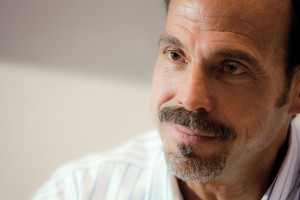
MOVER & SHAKER OF THE YEAR
Rob Parmentier, President
Sea Ray Group
Knoxville, Tenn.
It’s not uncommon – especially in an economy like today’s – for an industry giant to sit back and wait for things to get better.
Sea Ray President Rob Parmentier says that kind of thinking is what leads to a market leader quickly becoming an also-ran. With a wave of new and revamped product lines and smart industry partnerships, Parmentier has positioned Sea Ray to take advantage of the industry upswing. For those efforts, Boating Industry has named him the 2012 Mover & Shaker of the Year.
“We want to maintain our position as one of the best brands in the world,” Parmentier says. “We want our dealers to be profitable; we want to be profitable. In order to do that we have to follow the trends — quickly.”
With 30 years of experience at Sea Ray, Parmentier is proud to point out that he is one of the few people left at the company who worked with founder C.N. Ray. He says his passion for innovation and customer service follows from Ray’s view that the company always had to be able to answer “tomorrow’s question today.”
One of the ways Sea Ray is doing that is by launching new product lines this fall in the jet boat and outboard segments.
The company is introducing both 21- and 24-foot jet boat models. It’s actually a return to the market for Sea Ray, which built 10,000 jet boats in the 1990s. German engine manufacturer Weber Motors will build the four-stroke engines and jet propulsion that will power the new models.
“We were watching the trends, looking to see what the consumers out there were buying and what they liked,” Parmentier says. “People like the way they drive, they have a little bit more of a fun feeling to them.”
Beyond the jet power, Sea Ray’s research found that consumers also like the feel of the open cockpit, which is very conducive to rest and relaxation.
Constant communication and collaboration with Sea Ray’s network of dealers is a key part of the company’s success, Parmentier says.
Most recently, Sea Ray partnered with MarineMax to dream up the new 370 Venture, a luxury express cruiser powered by twin Mercury Verado outboards.
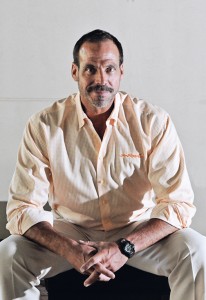
“That was (MarineMax CEO) Bill McGill really pressing us – ‘Make sure you guys are not forgetting the outboard market; it’s coming back,’” Parmentier says. “He was 100 percent right.”
Sea Ray is taking that idea a step further, preparing to offer outboards on the 22- and 24-foot Sundeck models beginning this fall. Consumers are opting for outboards because they’re quieter and easier to care for, Parmentier says. And as part of the Brunswick family, Sea Ray has “the best company to partner with” in Mercury, he adds.
Sea Ray has also grown sales with an innovative partnership with retail giant Costco. Now in its third year, the program exposes a new group of customers to boating and offers increased sales opportunities for the Sea Ray dealer network.
“We were in severe economic times, so our dealers were looking for us to help them come up with some new ideas,” Parmentier says.
The sales all go through existing Sea Ray dealers, so Costco customers get the full Sea Ray experience, an important part of the program’s success, Parmentier says.
Sea Ray estimates that nearly 60 percent of people who buy a Sea Ray through Costco are new to boating. Only 20 percent of traditional Sea Ray buyers are new to the industry.
“They’ve got 15 million members,” he says. “That was an avenue that we had immediate access to that we could never pay for in our marketing.”
Although it may seem like an easy decision today, Parmentier says that there is risk whenever you choose to associate your brand with another one. Taking that chance, and making other similar decisions are what make Sea Ray stand out from the crowd and make Parmentier our 2012 Mover & Shaker of the Year.
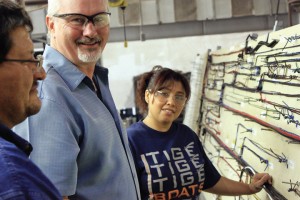 MOVER & SHAKER FINALIST
MOVER & SHAKER FINALIST
Rick Correll, President
Tigé Boats
Abilene, Texas
Even as the recession was hitting the marine industry hardest, the management team at Tigé Boats knew there were going to be opportunities for companies that grabbed them.
As the plant manager and general manager/vice president, Rick Correll had helped build a lean operation that made it possible for Tigé to quickly react to the shifting market. When he became company president in the depths of the recession in 2009, he quickly looked to capitalize on the downturn.
With a nearly debt-free organization and no inventory to dispose of, Tigé was well positioned to do that.
“We don’t work on any type of financing, so we can reinvest money in the company,” Correll says. “Everybody else was burdened with these big mortgages and was pulling in.”
Over the last three years, Tigé has grown market share in its multisport inboard market, climbing from eighth to fifth. With financing a challenge, Correll and his team knew that the best buyers were going to be the high-end customers who had available cash and were weathering the recession better than most. So, Tigé focused on features that discriminating buyers wanted, such as improved touch screen technology and added ballast options.
Tigé’s complete customization of its boats (the company doesn’t build any stock boats) also made it attractive to the higher-end customer. At the same time, introducing new lean manufacturing techniques helped Tigé reduce production time from nearly 30 days to only eight days.
“People want to build the boat, get it the way they want it, but don’t want to wait the entire season,” Correll says.
With many other boat builders struggling to pay their bills, Tigé was also able to negotiate better prices on many materials.
“We took every discount that was offered to us. If we were offered a discount for net 10 days, we paid in 10 days,” Correll says. “We made sure we were always the first ones to pay our suppliers.”
That approach elevated the company in the eyes of many suppliers. Even though Tigé wasn’t buying the quantity of other manufacturers, its quick payment gave the company increased buying power.
“When things get slow it’s about who’s paying on time, who’s going to help them meet their payroll,” Correll says. “When engines became in short supply, when windshields became in short supply, we never missed one shipment from one of our suppliers.”
Having worked with and for several larger operations during his 30 years in the industry, Correll believes in running a company with as few layers of management as possible. He feels that makes the company able to more quickly make changes and adapt to the market. As he likes to tell his managers, “If I miss two weeks and the janitor misses two weeks, who do you think they’ll notice first?”
All of Tigé’s 140 employees (up from a low of 40) are expected to take responsibility for the quality of Tigé boats.
“The guys on the line are the ones who make it happen,” he says.
Along those lines, all Tigé employees are encouraged to take boats out on the water for their personal use — as long as they come back with 10 suggestions to improve it. That culture of responsibility has also helped the company reduce its warranty expenses from 2.5 percent of sales to less than 1/10th of 1 percent – all while increasing warranties from one to three years.
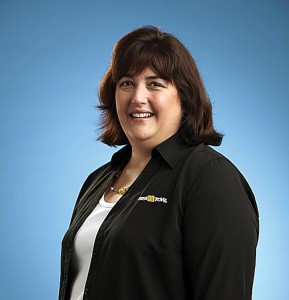 MOVER & SHAKER FINALIST
MOVER & SHAKER FINALIST
Kristen Frohnhoefer, Chief Administrative Officer
Sea Tow Services International
Southold, N.Y.
According to some measures, hundreds of thousands of people have left boating since the recession started. Despite that, Sea Tow has managed to hold membership steady during the worst years, and has increased membership this year and last.
Kristen Frohnhoefer, chief administrative officer for the on-water assistance provider, is quick to point out that the company didn’t face the same challenges as manufacturers and dealers trying to sell new boats to a shell-shocked consumer.
“Those people who were diehard boaters have stayed out there,” she says. “They still felt the need to know there is someone backing them up, especially because they’re holding on to their boats longer.”
A unique business model isn’t enough to explain all of the company’s success, though. Sea Tow has also thrived because the company has marketed heavily and invested in a lengthy consumer research project.
Starting in 2009, Frohnhoefer took the lead as Sea Tow conducted a yearlong series of in-person focus groups across the country. The company hired a third-party company to find out what boaters thought of Sea Tow and its competitors.
Having worked in the company since her father founded it in 1983, Frohnhoefer knows a lot about the business and its members but also recognized there was an opportunity to improve.
“We wanted to find out who exactly is our customer, what are their trigger points for joining Sea Tow … what are they looking for from us as a company,” she says.
While it confirmed strong brand recognition and the good reputation of the company, the key takeaway from the research was that the biggest driver of membership was the people of Sea Tow.
“Our members love our local captains,” Frohnhoefer says. “It’s about that local personal relationship with someone. It’s not about this corporation; it’s about the people involved in it.”
With that information in hand, Sea Tow embarked on a rebranding mission. Most of the company’s marketing and advertising had been focused on its on-water assistance services. Now, the message is about the Sea Tow captains at the nearly 100 franchise locations, positioning them as the local on-water assistance experts. Sea Tow had its largest media spend in years and embarked on a complete redesign of its website to reflect the new message.
Sea Tow also launched a mobile app earlier this year that has already been downloaded 75,000 times in its first four months of
availability. While Sea Tow still advocates a VHF radio as the best way to get assistance, the company recognized that more and more people were relying on their cell phones. Frohnhoefer was the co-project manager on the yearlong app development.
Designed to include “all the tools that boaters need in one app,” the app has tide information, weather radar, GPS/compass functionality and speed dial for 911 or the Coast Guard in case of emergency or to Sea Tow in a non-emergency situation. More than 150 people have already used the app to get on-water assistance.
The app is available for free as part of Sea Tow’s efforts to promote boating safety, says Frohnhoefer, who also serves on the board of directors for the Sea Tow Foundation, Sea Tow’s non-profit arm dedicated to public safety.
“We’re big boating safety proponents and it was important to us that everyone had access to it,” she says.
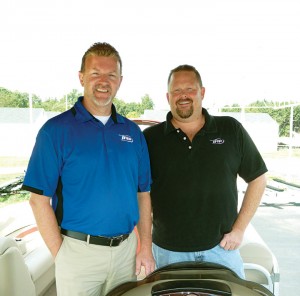
MOVER & SHAKER FINALISTS
Michael Peters, CEO, & Vernon Schoore, CFO
Indiana Marine Products
Angola, Ind.
When Michael Peters and Vernon Schoore bought Indiana Marine Products in 2006, many of the company’s customers didn’t see the need for the lean manufacturing processes they wanted to implement.
That all changed, though, after the economy crashed.
“Going through what everybody went through, none of us had a choice if we were going to survive,” Peters says.
From their time working in the automotive industry and other businesses, Peters and Schoore saw a lot of opportunity to grow IMP by increasing manufacturing efficiency and better developing the company’s supply chain.
At the time, Peters was managing partner of a venture capital firm that was getting ready to sell off IMP’s assets. Peters saw a company that was a diamond-in-the-rough, only needing some investment and restructuring to be successful. When his partners weren’t interested in making the necessary investment, he and Schoore decided to buy the company themselves.
“What I saw was a number of things that excited me. I saw an industry with way too much manufacturing capacity, with too many boat brands, too many builders,” Peters says. “The industry had to consolidate and when you have consolidation you have opportunity.”
To thrive in the new normal required a total rethinking of how IMP does business. Instead of producing standard panels and sitting on inventory, Peters and Schoore refocused the company on making custom systems. The company is now purchasing and installing steering wheels, controls, horns – whatever goes into the panel – and supplying the completed panel as one part to its clients. This means customers have fewer parts to order, an important benefit for companies that have cut staff over the last several years, Peters says.
In 2006, IMP needed six-week lead times. Now, the delivery model is two weeks or less. The company has accomplished that by outsourcing any high-volume work that isn’t custom to the many vac-forming and vinyl wrapping companies located in Indiana to support the RV industry.
Peters and Schoore have also changed the way the company works with clients. Instead of salespeople, the company now sends its engineers to its customers’ facilities to work with their designers to find the best solutions. Located in what Peters calls “pontoon heaven,” IMP is well positioned to spend a lot of time with their biggest clients.
The changes have resulted in incredible growth for the company. From 80 employees in 2006 – and a low of 35 in 2008 – there are now more than 200 people working for IMP. Sales were up 140 percent in 2010 and 53 percent in 2011. This year’s sales pace is running 60 percent ahead of last year.
And there’s still potential for more growth, Peters says.
“I see us taking this to other regions of the country,” he says. “There are other boat-building regions that are underserved and we’re looking at those now.”





Outboards are coming back? SeaRay is at the forefront of innovation? Who wrote this story? SeaRay sales have been streadily declining while other manufacturers have risen. Outboards are being placed on runabouts because of EPA regulations, not because consumers want them. Jet Boats are rising and it doesn’t take a genious mover and shaker to realize 25% of your sales have been lost to another market segment. Closing plants, FIring sales managers…these are the signs of a mover and shaker? Come on, this smacks a little of Brunswick butt smooching.